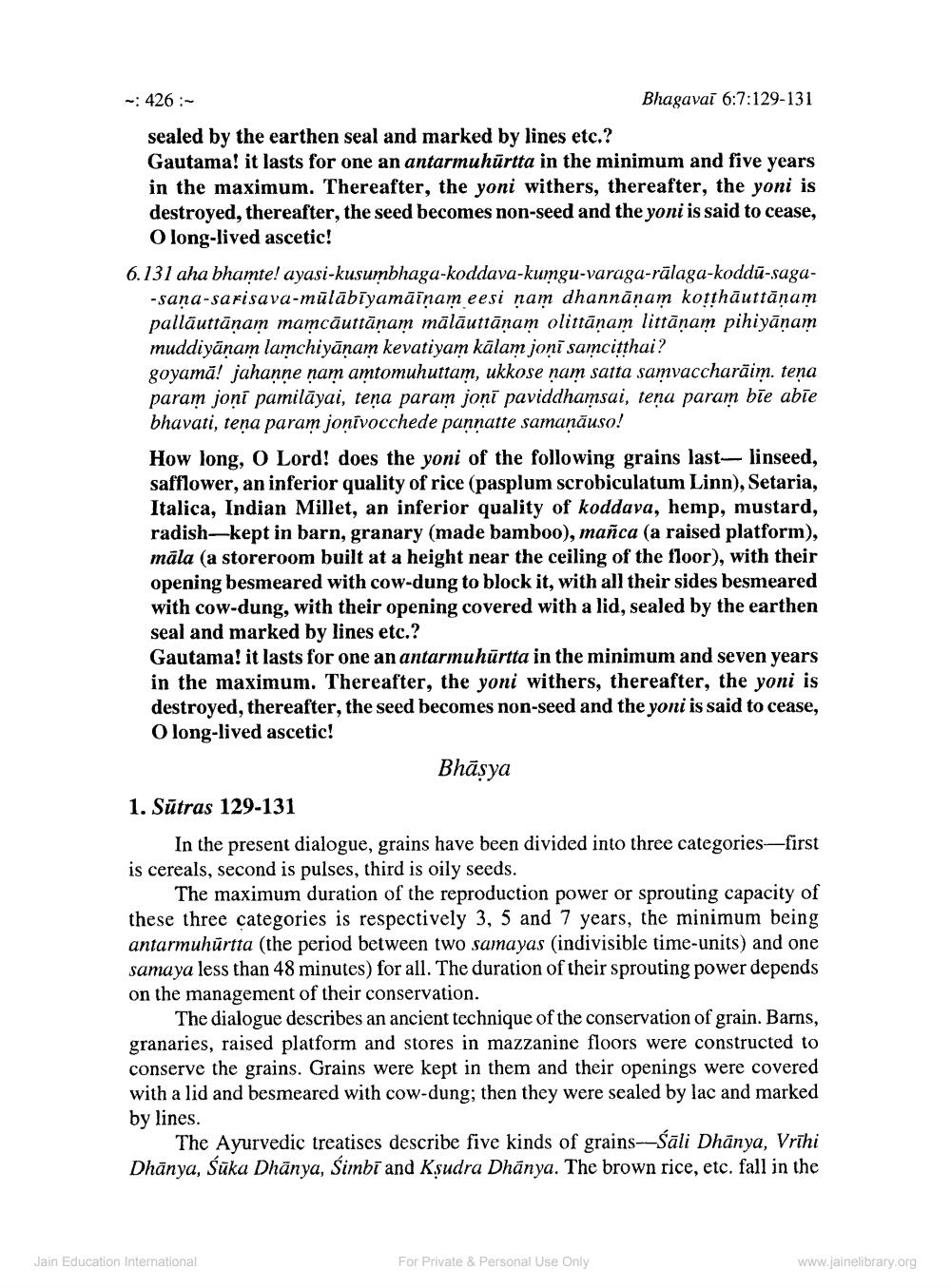________________
- 426
Bhagavai 6:7:129-131 sealed by the earthen seal and marked by lines etc.? Gautama! it lasts for one an antarmuhūrtta in the minimum and five years in the maximum. Thereafter, the yoni withers, thereafter, the yoni is destroyed, thereafter, the seed becomes non-seed and the yoni is said to cease,
O long-lived ascetic! 6.131 aha bhamte! ayasi-kusumbhaga-koddava-kumgu-varaga-rälaga-koddū-saga
-sana-sarisava-mülābīyamāīņam eesi nam dhannānam kotthāuttānam pallāuttānam mamcāuttānam mālāuttānam olittānam littānam pihiyāṇam muddiyānam lamchiyānam kevatiyam kālam joni samcitthai? goyamā! jahanne nam amtomuhuttam, ukkose nam satta samvaccharäim. tena param joní pamilāyai, tena param joni paviddhamsai, tena param bie abie bhavati, tena param jonivocchede pannatte samanäuso! How long, O Lord! does the yoni of the following grains last linseed, safflower, an inferior quality of rice (pasplum scrobiculatum Linn), Setaria, Italica, Indian Millet, an inferior quality of koddava, hemp, mustard, radish-kept in barn, granary (made bamboo), manca (a raised platform), māla (a storeroom built at a height near the ceiling of the floor), with their opening besmeared with cow-dung to block it, with all their sides besmeared with cow-dung, with their opening covered with a lid, sealed by the earthen seal and marked by lines etc.? Gautama! it lasts for one an antarmuhurtta in the minimum and seven years in the maximum. Thereafter, the yoni withers, thereafter, the yoni is destroyed, thereafter, the seed becomes non-seed and the yoni is said to cease, O long-lived ascetic!
Bhāsya 1. Sūtras 129-131
In the present dialogue, grains have been divided into three categories—first is cereals, second is pulses, third is oily seeds.
The maximum duration of the reproduction power or sprouting capacity of these three categories is respectively 3, 5 and 7 years, the minimum being antarmuhürtta (the period between two samayas (indivisible time-units) and one samaya less than 48 minutes) for all. The duration of their sprouting power depends on the management of their conservation.
The dialogue describes an ancient technique of the conservation of grain. Barns, granaries, raised platform and stores in mazzanine floors were constructed to conserve the grains. Grains were kept in them and their openings were covered with a lid and besmeared with cow-dung; then they were sealed by lac and marked by lines.
The Ayurvedic treatises describe five kinds of grains--Sāli Dhānya, Vrihi Dhānya, Sūka Dhānya, Simbi and Ksudra Dhānya. The brown rice, etc. fall in the
Jain Education International
For Private & Personal Use Only
www.jainelibrary.org




